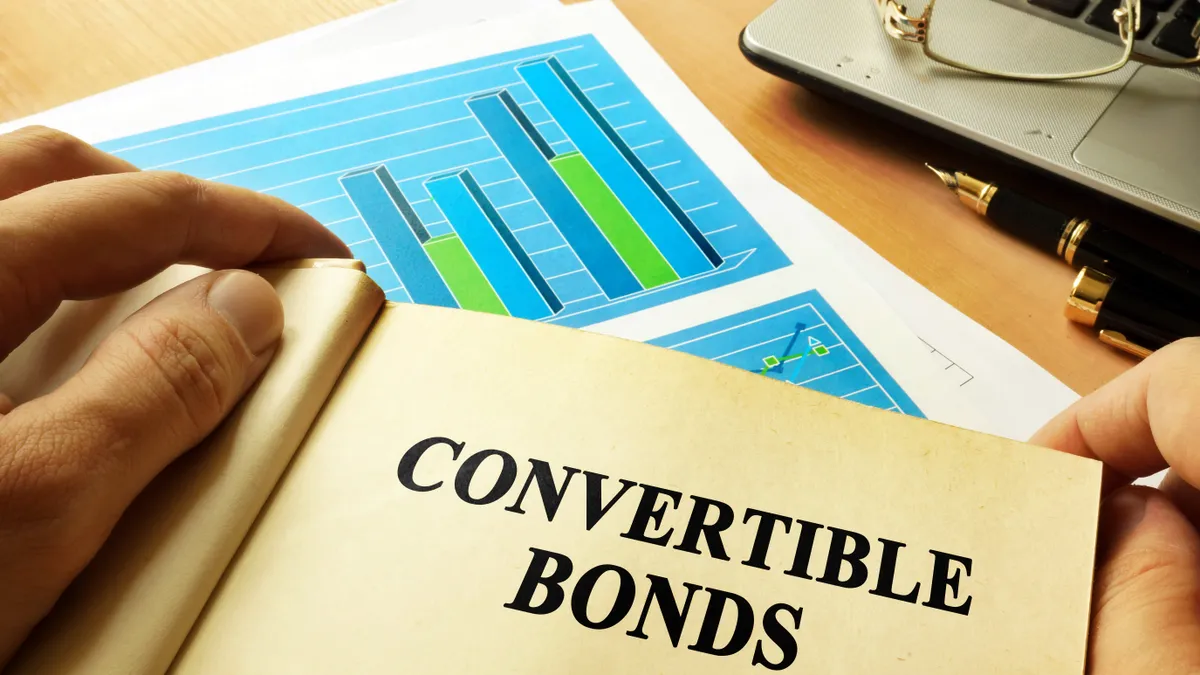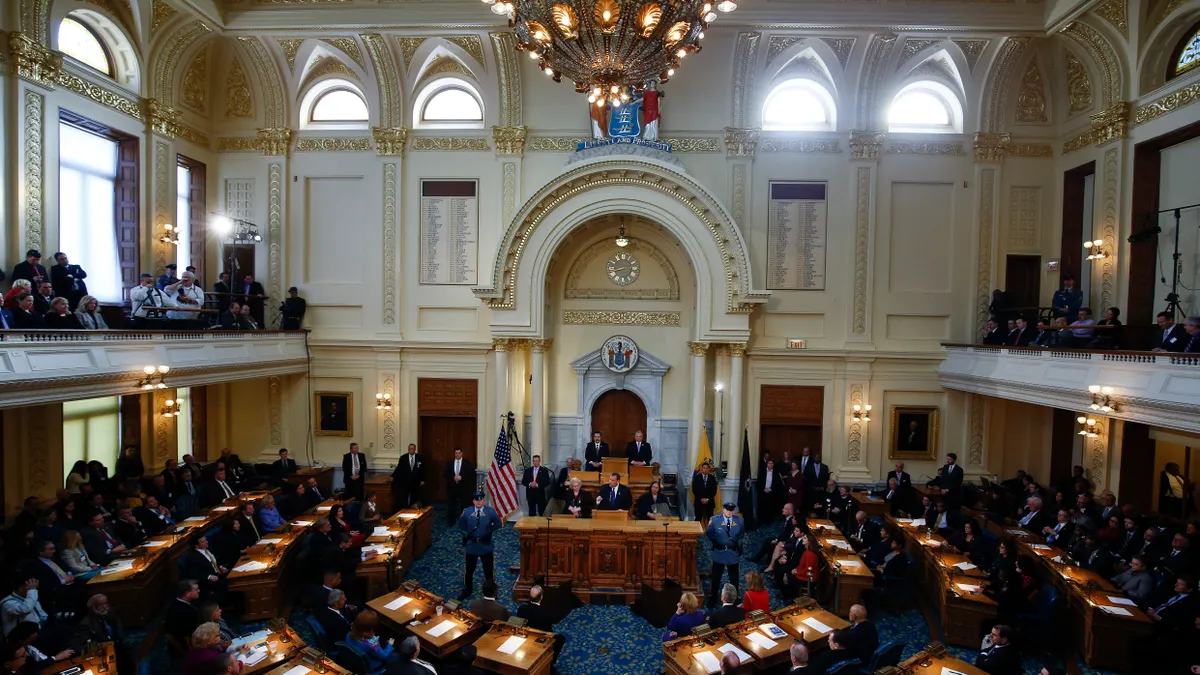The convertible bond market is poised to emerge from a year-to-date slump as CFOs warm back up to the cost, tax and timing-friendly advantages that the hybrid securities can provide, according to Tracy Maitland, president and chief investment officer of Advent Capital Management.
“Right now there’s not a lot of capital market activity because CFOs and treasurers are kind of frozen, just like investors,” Maitland said in an interview. But “as the capital markets open up — and even if they don’t — you’re going to start to see more convertible new issuance because it’s a way for [companies] to raise capital quickly, efficiently and at a lower cost than straight debt.”
Maitland is a long-time investor in convertible bonds. His New York-based investment firm, which has more than $9 billion in assets under management, has over $8 billion invested in convertibles, he said. He is also one of the authors of a book on the subject, “Convertible Securities,” published in April.
Convertibles have a storied history dating back to the nineteenth century when U.S. railroads used them to build out their lines, according to a Credit Suisse report. CFOs often like them, in part because they’re relatively quick to get to market. They’re also typically an attractive source of capital for companies with high growth prospects that are hamstrung by a low credit credit rating or, in the case of many tech startups, no hard assets to use as collateral for a bank loan. The bonds can be converted into equity shares, so investors who buy them are betting that the capital raise will fuel enough growth to drive up the company’s stock price to a point where it makes sense for them to convert the bonds to stock.
“A convertible is a bond with an embedded equity option,” Maitland said. Companies are able to effectively “buy down” their interest cost by selling that option, he said. “It’s a way to get more equity on your balance sheet at a higher equity valutation at a future point in time, and at that time it will improve your debt-to-capital ratio.”

The comparatively lower coupon rate typically carried by convertible bonds can also pay off for companies at tax time, Maitland said. With interest expense deductions now capped by the Tax Cuts and Jobs Act of 2017, it’s particularly beneficial to keep rates lower, he said. Another advantage is that with share prices currently depressed, financial executives can use the proceeds to buy back shares, making the financing accretive to earnings, Maitland said.
Issuance plummets
For now, convertible issuance is still badly beaten down. Global convertible issuance volumes posted the slowest first half on record as they were whipsawed by rising financing costs and plunging stock prices along with inflation concerns, plummeting nearly 90% to about $11 billion from just under $100 billion during the first six months of 2021, according to a July 1 Bank of America Securities report.
That’s a reversal from the year earlier which saw “opportunistic cap-raises from growing companies exploiting surging equity prices and rock-bottom financing costs,” BofA analysts led by Michael Youngworth wrote. A surge of big names like Peloton Interactive, which closed a $1 billion zero-coupon deal early last year, as well as smaller growth companies tapped the financing early in the pandemic.
Maitland isn’t alone in believing that that market is ripe for a turnaround. While noting a “full recovery requires patience,” BofA analysts are also expecting an improved pace through year-end, partly because companies that issue the convertibles would be drawn to convertibles’ lower average coupon in the 2% range as compared to 6% for high-yield debt’s average coupon, according to the report.
A different world
Still, convertible rates have crept up since the days of zero-coupon debt that made it so attractive as recently as last year. “When Peloton did their deal, that was a different world,” Maitland said.
An upsized $700 million convertible offering from the Largo, Florida-based medical technology company CONMED priced with a 2.25% coupon in June, while a $450 million convertible deal from South San Francisco, Calif.-based biopharma company Cytokinetics on July 1 priced with a 3.5% coupon.
And finance chiefs venturing into what is now a buyer’s market will also need to consider some potential changes to terms that can help make deals more attractive to investors. Maitland said that could mean higher yields, shifts in conversion premiums or more call protection.
“It’s like, if you go buy a car, you pay a certain price and you’ve got to get certain features and you trade off with the dealer about the features,” Maitland said. “It’s the same thing with a convertible issue. There are different features and you as an issuer have to decide what’s important to you. But at the end of the day you have to be able to entice the investor to buy the convertible issue.”
Maitland believes that there is an appetite for appropriately priced convertible deals among investors, and he expects more issuance of the debt by CFOs and other financial executives who “think out of the box.”





















